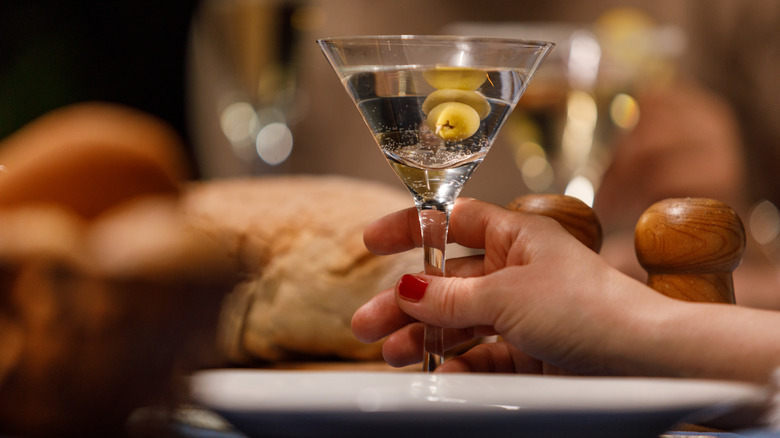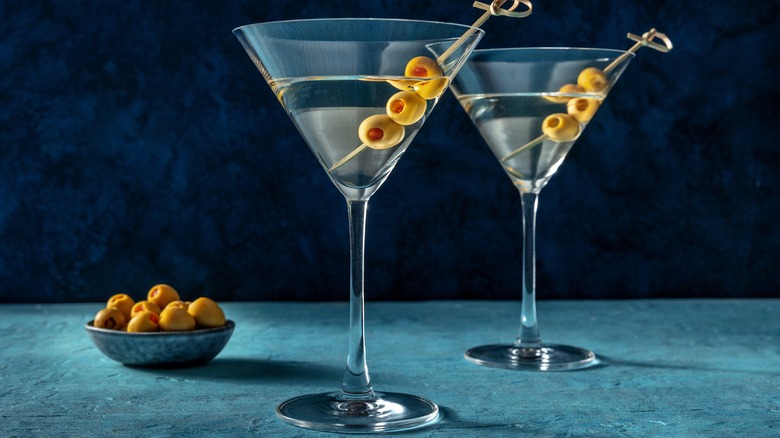The Temperature Benefit Of Stirring Your Martini
In the cocktail realm, it's all about the details — especially when it comes to crafting stripped-down drinks in which the ingredients (and how they're assembled) have to speak for themselves. Discerning sippers would be hard-pressed to name a cocktail more minimal than a classic Martini, and there's a reason why stirring it is the move for getting it right.
Stirring a cocktail may be a simple mechanical motion, but it's a complex process. Ice is a big deal, and the way you use ice to chill a cocktail can make a big difference, so big that getting the ice part wrong can totally ruin your drink. Ice serves two essential roles in assembling a successful cocktail: temperature control and dilution. That's largely why the "shaken" and "stirred" categories exist; it's all about manipulating that temperature control and dilution as the ice melts, which can yield dramatically different results.
Chilling does not exist without dilution. Ice doesn't begin lowering the temperature of a cocktail until it begins melting, and stirring slows the rate at which the ice melts compared to shaking. Dilution softens the harshness of the ingredients in a cocktail, and the addition of a little water also opens up more subtle, nuanced flavor notes in the spirits — both particularly useful benefits when working with spirit-forward cocktails and those made with botanicals like juniper-flavored gin (which literally describes a Martini).
Keep the temperature lower and let the gin shine
For starters, a true, perfect Martini does not exist without gin. In an episode of "A Cook's Tour," Anthony Bourdain asks legendary bartender Dale DeGroff, "Dale, I like a vodka Martini. Is that really a Martini?" to which the master mixologist replies, "Gin is a Martini. Vodka doesn't bring any flavor to the party. I want all the flavors of the botanicals in the gin. I want 'em all to come together and make a great drink."
Gin's dimensionality makes a Martini what it is, and stirring helps showcase those artfully crafted botanical notes. Stirred drinks come out a bit warmer than shaken drinks, which can be a good thing for opening up the complex tasting notes in the gin, making sure the bitter spirit is the star of the show. In addition to the slightly higher temperature, stirring also creates minimal aeration, which ensures that the mixture retains its clarity and isn't too agitated or frothy.
Many if not most bartenders build their Martinis by stirring them with ice in a separate mixing glass using a long-handled bar spoon, and then straining the finished cocktail into a chilled glass. Stirring for 30 to 45 seconds (roughly 50 rotations, which adds about 1 ounce of water) is the industry standard. Martinis tend to be stirred on the longer end due to their high alcohol content (more water means more softness) and the fact that they're served up (aka without ice).

